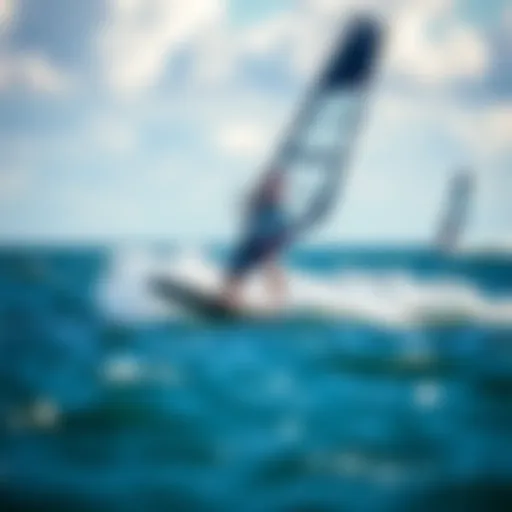Understanding Kite Costs: A Detailed Analysis


Intro
Understanding the cost of kites involves more than just the price tag you see at the store. There’s a labyrinth of factors that come together to create the final figure. Kiteboarding, a sport that rolls together skill, wind, and water, has blossomed into a favorite pastime for many adventure seekers and sports enthusiasts alike. Therefore, grasping the economics behind kite pricing is crucial for anyone looking to dip their toes—or rather, their boards—into this exhilarating activity.
This guide takes a deep dive into the many elements that influence kite pricing. It’s all about shining light on the different types of kites available, the materials used in their construction, and the weight that brand reputation carries in the cost equation. Moreover, we’ll take a look at other costs that often fly under the radar, like maintenance, accessories, and how geography can skew prices from one region to another. By the end, readers will be armed with the knowledge necessary to navigate the kiteboarding world, making wise choices based on their individual needs and preferences.
Get ready to unfurl your understanding of what goes into kite pricing and emerge equipped to make informed purchasing decisions, whether you’re a rookie or a seasoned kiteboarder.
Prelims to Kite Pricing
Kiteboarding, a thrilling blend of surfing and flying, has gained a steady following over the years. With a growing number of enthusiasts cracking the wind and riding the waves, understanding the pricing of kites becomes paramount for anyone looking to partake in this exhilarating sport. This section aims to shed light on the importance of kite pricing and what factors contribute to it.
Investing in a kite is not merely a casual purchase; it is a crucial decision that can affect performance, safety, and overall enjoyment on the water. Kite pricing goes beyond the sticker tag, encompassing aspects of quality and durability, which could make or break a rider's experience. Thus, grasping the nuances of kite pricing is essential for both novice and seasoned kiteboarders.
Understanding Kiteboard Basics
Before diving into the complexities of pricing, it's important to lay the groundwork by understanding what kiteboarding entails. At its core, kiteboarding involves utilizing a kite to harness wind power, propelling riders across the water. The basic components include the kite itself, a board, lines, and a harness. Individual components play specific roles in ensuring a smooth ride.
Kites can vary significantly, influenced by their design, size, and materials used. For instance, some kites are more suited for beginners while others cater to advanced riders seeking performance. With such variety, it's easy to see how prices can range widely based on these factors. A beginner’s kite, typically crafted from less expensive materials and featuring simpler designs, will often cost much less than a performance kite, which utilizes cutting-edge technology and premium components.
Why Pricing Matters
Understanding why pricing matters is crucial in making informed purchasing decisions. A well-priced kite can spell the difference between a successful day out on the water and a disastrous one. Higher-priced kites generally indicate better materials, advanced design engineering, and enhanced performance features. Conversely, opting for a cheaper model could lead to compromised safety or lackluster performance, especially in challenging conditions.
"The cost of kite is not just about the kite itself; it's about the entire riding experience."
For prospective buyers, here are some key reasons why kite pricing is a consideration:
- Quality Assurance: Higher prices might suggest better construction and durability. Riders need kites that withstand wear and tear.
- Resale Value: Kites from reputed brands hold their value better. For those upgrading, the potential return on investment is an important factor to consider.
- Performance Features: Performance kites, while pricier, often come equipped with features that can enhance ride experience and safety.
Focusing on kite pricing allows individuals to align their budget with their needs and preferences. The right kite can elevate the entire experience, making it well worth the investment.
Types of Kites Available
When diving into the world of kiteboarding, understanding the types of kites available is crucial. Kites are not just pieces of fabric tethered to strings; they are finely tuned machines designed for different experiences and conditions. Each type has its own unique characteristics, and knowing what to look for can significantly impact your enjoyment and performance on the water.
Foil Kites vs. Hard Kites
Foil kites, as the name suggests, have an inflatable structure that gives them their shape, relying on air to remain inflated. These kites are often lighter and easier to pack, making them a favorite among travelers and those who don’t want to lug around heavy equipment. Their performance in light winds is commendable, allowing for extended rides even when the breeze is gentle. However, they can be a bit trickier to manage when the wind picks up, requiring a bit more finesse to keep them stable.
On the flip side, hard kites, or rigid frame kites, are built with a more structured frame. These usually offer enhanced stability and control in high winds, making them popular among advanced riders looking for performance. They tend to be heavier but provide a unique feel and responsiveness that aficionados appreciate. Choosing between the two often comes down to personal preference and the conditions in which you plan to ride.
Beginner Kites
When you’re just starting your journey into kiteboarding, selecting the right beginner kite can be a game-changer. These kites are designed with stability in mind, making them forgiving for those who are still mastering their skills. Typically, beginner kites are larger and feature a simple design that emphasizes ease of use. They are built to be low maintenance, which is a boon for newcomers who might cause wear and tear as they learn the ropes.
Factors like depower features become important here. A kite that allows easy depowering can help you manage unexpected gusts, giving you confidence as you find your footing. Prices for beginner kites can range widely, often reflecting the size and materials used to construct them.
Advanced and Performance Kites
For those already comfortable with kiteboarding, moving up to advanced and performance kites is often the next step. These kites are crafted with specific features that enhance performance, including speed, maneuverability, and responsiveness. They come in various designs tailored for tricks, racing, or all-around use.
One critical aspect of performance kites is the aspect ratio, which affects their aerodynamics. A higher aspect ratio often provides enhanced speed and lift, allowing riders to perform aerial tricks or feel more connected to the wind. However, such kites can be less forgiving, so a solid skill set is often required to truly harness their potential without yielding to frustrations.
In terms of cost, performance kites typically tend to be on the higher end of the spectrum, attributed to their complex design and specialized materials. Investing in a good performance kite can elevate your kiteboarding experience significantly, making you feel like you have wings once you hit the water.
Understanding the distinctions between these different types of kites not only aids in making an informed purchase but also sets the stage for a more enriching kiteboarding journey.
Factors Influencing Kite Costs


When venturing into the world of kiteboarding, understanding how pricing works is crucial. The costs associated with kites are not merely arbitrary figures; they come from a complex interplay of several influential factors. Diving deep into how these variables shape kite pricing will arm buyers with knowledge and help them make informed decisions. This section sheds light on three pivotal aspects: materials and construction, design complexity, and brand reputation. Each component interacts to create a final price that reflects the kite's performance potential, longevity, and user satisfaction.
Materials and Construction
The choice of materials and the construction techniques employed in making a kite can greatly affect its price. Lightweight fabrics, durable stitching, and robust frame materials all play roles in the kite's overall performance and resilience. For instance, a kite crafted from high-quality ripstop nylon may cost more than one made from a cheaper polyester fabric, but the investment could lead to a better riding experience, especially in challenging conditions.
Here are some factors to consider regarding materials:
- Durability: Kites made with superior materials tend to last longer, reducing the frequency of replacements. For instance, Carbon fiber frames are light yet incredibly sturdy, offering better performance compared to aluminum options.
- Weight: Lighter kites are often made from advanced materials that come at a premium. The weight influences aerial performance and the ease of control, which could justify higher prices.
- Manufacturing Method: Hand-stitched kites or those made using advanced technology such as heat sealing can be more expensive. This craftsmanship often leads to fewer defects and increased reliability during use.
Design Complexity
The complexity of a kite's design significantly contributes to its overall cost. More intricate designs or those that require advanced aerodynamic principles will usually carry a higher price tag due to the additional research and development as well as manufacturing processes involved. A few key points include:
- Shape Variety: Kites come in a myriad of shapes and sizes, each designed to target specific wind conditions and user preferences. Spherical or hybrid shapes often require additional engineering precision, increasing the price.
- Advanced Features: Some kites come equipped with technological advancements, such as adjustable settings or enhanced stability features, which can make them pricier.
- Custom Designs: Personalized or bespoke kites crafted to meet an individual’s specific preferences or needs usually entail a higher cost due to the customization involved.
Brand Reputation
The brand producing the kite can have a considerable impact on the price. Established brands typically command higher prices due to their track record of performance, reliability, and innovation. Consider the following:
- Market Trust: Well-known brands often have loyal customer bases and can charge more for their products because of the perceived quality that comes along with their name.
- R&D Investment: Leading brands usually invest significantly in research and development, ensuring their kites incorporate the latest advancements. This willingness to innovate can translate into better performance and reliability, justifying the higher costs.
- Customer Support and Warranty: Reputable brands often offer comprehensive customer service, warranties, and support to back their products, which can also factor into their pricing structures.
Regional Pricing Variations
Understanding the regional pricing variations for kites is crucial for buyers aiming to make informed decisions. The cost of kites can vary widely based on geography, influenced by several factors like local demand, currency fluctuations, and shipping costs. This section highlights how these elements come into play, offering concrete insights into the ticket price of kiteboarding in different locales.
Global Market Trends
When you look at the global market, you start to see a pattern in kite prices. In places where kiteboarding is popular, such as the coastal areas of Brazil or the beaches of Maui, you can expect to pay less for kites, thanks to the competitive market and a higher volume of sales. Manufacturers and vendors are inclined to offer better prices to attract more buyers.
Conversely, in regions where kiteboarding isn't as common, prices can skyrocket. For instance, if you’re living inland or in a country with fewer kitesurfers, the shipping costs and lack of competition can inflate prices. The demand consequently dictates the price—the lower the supply, the higher the costs.
Unquestionably, international economic shifts also play a role. For example, the value of currency against the US dollar can directly impact the cost of kites imported from abroad. If your country's currency weakens, imported kites become increasingly expensive.
Local Demand and Availability
Local demand and availability shape the kite market significantly. In areas where kiteboarding has gain traction, you might find a wide range of options. Local shops stocked with a variety of kites typically engage in deals to attract customers, thus keeping prices competitive. Plus, being able to touch and feel the kites before buying is a big plus, setting up a local hub that benefits enthusiasts.
On the other hand, if you live in a place where kiteboarding is just getting off the ground, your choices will be quite limited. You might find a few models in a sports store, with very few options for brands, leading to higher prices just due to availability issues.
Another consideration is seasonality. In peak kiteboarding seasons—often aligning with summer months—prices might either rise due to demand or drop as shops attempt to clear out past-season stock.
It’s beneficial to gauge the local scene before making a purchase. Engaging in community groups or forums, such as on Reddit or local Facebook pages, can provide insights into where sales, discounts, or even second-hand options might be available.
Ultimately, understanding these nuances relative to your specific location can enhance your purchasing strategy, allowing you to find the optimal balance between quality and budget.
Associated Costs of Kiteboarding
Understanding the costs associated with kiteboarding is pivotal for anyone considering taking up this exhilarating sport. While the initial purchase price of the kite itself is often the primary focus, the full picture involves several other expenses that shouldn't be overlooked. This section delves into the various associated costs that kiteboarders need to factor in, ensuring they are well-prepared financially.
Kite Accessories
Kiteboarding doesn’t only rely on the kite; a range of accessories is essential for both performance and safety. These accessories play a significant role in enhancing the kiteboarding experience. Key items include:
- Harnesses: A good harness is not just comfortable but also crucial for proper control of the kite. Prices can vary widely, typically from $100 to $300, depending on the brand and quality.
- Control Bars: These are the conduits between the rider and the kite. A reliable control bar can range from $150 to $400 based on its features, such as safety systems and materials used.
- Lines and Leashes: Replacement lines are important for kite safety; they generally sell for around $50 to $150. Similarly, leashes can cost anywhere from $30 to $100 depending on their quality.
- Kite Bags: Protecting your equipment is key. Kite bags come in all styles and usually range from $40 to $150.
Investing in high-quality accessories can notably affect performance and comfort, ultimately enhancing the rider's experience. Skimping on these purchases may lead to discomfort or, worse, accidents.
Maintenance and Repairs
Once you have your equipment, keeping it in top shape is crucial. Kiteboarding equipment undergoes significant wear and tear, and maintenance can become an ongoing cost. Common maintenance activities include:
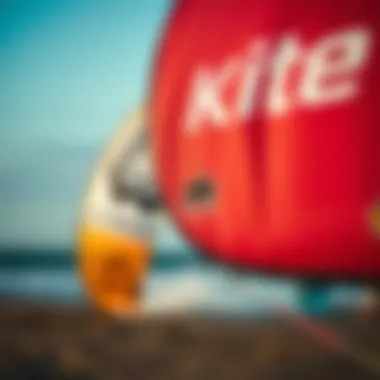
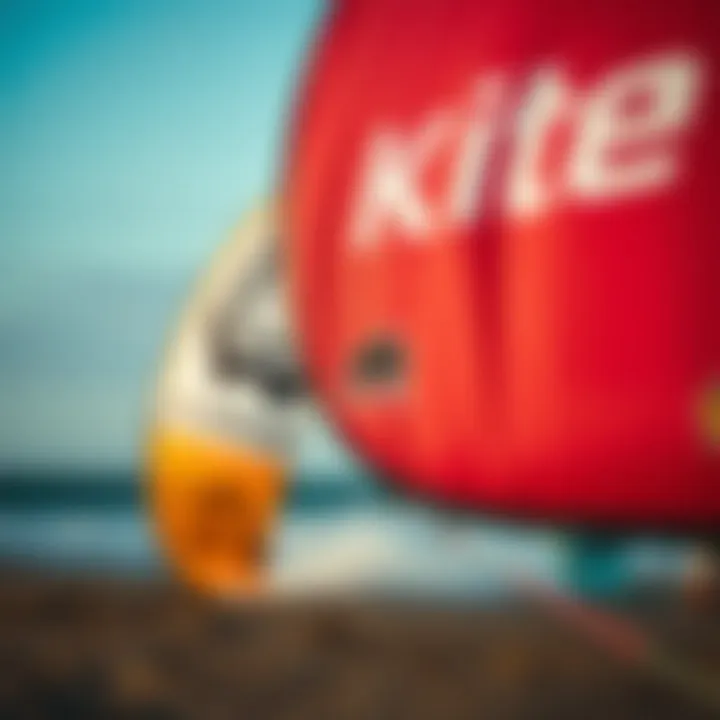
- Regular Inspections: Frequent checks for any signs of damage or wear, especially after heavy usage can often save a lot in repair costs later.
- Repair Kits: A basic repair kit, including patches and glue, is a wise investment, costing around $20 to $50.
- Professional Repairs: If something is damaged beyond a simple fix, professional repairs can be required. Depending on the damage, costs can climb up to $150 or more.
Proper maintenance prolongs the life of your kite and gear, ensuring safety and performance throughout your kiteboarding journey.
Safety Equipment
Safety cannot be an afterthought in kiteboarding. The right safety equipment not only protects the rider but also enhances overall enjoyment. Just a few essential safety items include:
- Helmets: It’s surprising how many riders forego this simple precaution. A good helmet ranges from $50 to $200.
- Impact Vests: These provide extra floatation and protection during crashes and usually cost between $50 and $150.
- Personal Flotation Devices (PFDs): Essential for keeping afloat, especially in open water, PFDs can range from $30 to $100.
When balancing cost and safety, it's clear that investing in the right gear is non-negotiable, especially on turbulent waters or challenging wind conditions.
Investing in safety equipment while kiteboarding is like putting on your seatbelt before driving. It's not just about looking cool; it's about staying safe.
Average Costs of Kites
Understanding the average costs of kites is crucial for anyone diving into kiteboarding or contemplating a purchase for the first time. The price spectrum can range widely, influenced by various factors such as brand, complexity of design, and intended use. Knowing these ranges can prevent buyers from overspending or settling for a kite that doesn’t meet their needs. Furthermore, being informed about average costs helps in budget planning and understanding the overall investment in kiteboarding.
Entry-Level Kites
Entry-level kites typically cater to newcomers in the kiteboarding scene, offering ease of use and reliable performance without breaking the bank. The average cost for these kites generally falls within the $300 to $600 range.
Consider models from brands like North Kiteboarding or Cabrinha, which often provide great value without skimping on quality. For beginners, these kites are designed with safety and teachability in mind, assisting users in learning the ropes effectively.
When budget shopping for entry-level kites, pay attention to the following:
- Size Matters: The size of the kite impacts the cost—larger kites often carry a higher price tag.
- Material Quality: Look for durable materials that ensure safety and longevity without compromising financial strain.
- User-Friendly Features: Many beginner kites come equipped with features that enhance usability, such as automatic relaunch capabilities and simplified handles.
Mid-Range Options
As surfers become accustomed to their skills, many look toward mid-range kites, which offer a blend of performance and affordability. Usually priced between $600 and $1,200, these kites feature advanced materials and design elements that enhance both control and responsiveness.
For instance, models from Slingshot or Ozone provide a step up in performance while still being manageable for relatively new riders. This price range often includes a wide variety of sizes, allowing riders to select a kite that matches their weight and the conditions they typically face.
When examining mid-range options, consider:
- Versatility: Mid-range kites can typically handle a range of wind conditions, making them suitable for various environments.
- Updated Technology: Such kites typically incorporate technology upgrades that improve handling and aerodynamics, ensuring a smooth ride.
- Resale Value: These kites tend to hold their value better than entry-level models, making any future upgrades less financially burdensome.
Premium Kites
For those who are serious about their kiteboarding experience, premium kites offer unparalleled performance, craftsmanship, and durability. Costs here often start at about $1,200 and can soar upwards of $3,000. Brands like F-One or Naish are often favored for their high-end kites, which provide optimal performance suitable for advanced tricks and competitions.
Key highlights that differentiate premium kites include:
- High-End Materials: The use of top-quality fabrics and components ensures these kites withstand harsh conditions and last longer.
- Unique Designs: Optimized for performance, premium kites have cutting-edge design features that improve efficiency in the air and during maneuvers.
- Customization: Many brands offer customizable options, allowing riders to select colors and specific features tailored to their riding style.
Premium kites are not just a purchase; they are an investment in your kiteboarding journey.
In summary, whether you are starting out with entry-level equipment, progressing with mid-range options, or investing in a premium kite, understanding the costs and value at each level will significantly enhance your kiteboarding experience.
Kite Cost and User Experience
When it comes to kiteboarding, the cost of kites isn't just a number on a price tag; it's intrinsically woven into the fabric of what you experience on the water. Kite cost significantly influences the user's experience, performance, and satisfaction. Understanding this relationship is essential for both newcomers diving into the sport and veterans looking for an upgrade.
Quality often correlates with price. Investing in a more expensive kite is typically a way to ensure better materials and design, which can dramatically enhance performance. An inferior kite may save you a few bucks upfront but could lead to difficulties navigating the water, unsuitable flying conditions, or possibly a quick trip to the repair shop.
In this guide, we will dissect this connection, covering how kite quality impacts performance and discussing satisfaction and resale value.
The Impact of Quality on Performance
The performance of a kite is often determined by the quality of its construction materials and design features. When you invest in a high-quality kite, you’re not just buying a piece of equipment; you’re securing a better experience on the water. For instance, a kite made from ripstop nylon is considerably more durable than one made from cheaper materials.
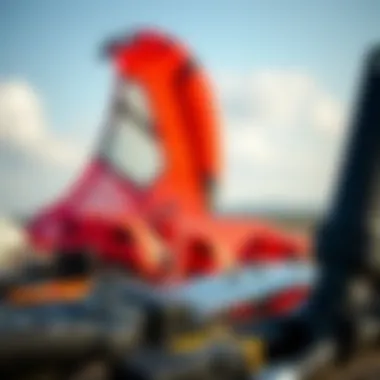
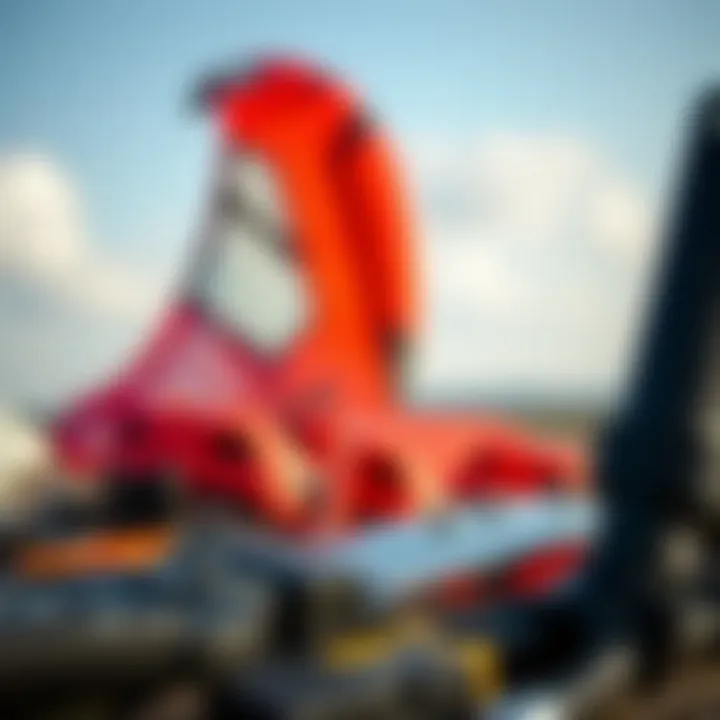
Moreover, the aerodynamic design—whether it’s the shape or the bridle configuration—can affect how the kite performs in various wind conditions. A quality kite flies more efficiently, which translates into better stability and responsiveness in the air. This means less time focusing on battling the kite, and more time enjoying the ride. As such:
- Durability: Higher quality kites last longer, saving you money on replacements.
- Performance in Varied Conditions: Great designs adjust to different wind strengths, ensuring a smoother experience.
- Overall Enjoyment: Better performance can lead to increased skill development, keeping the sport fresh.
In summary, the quality of the kite you choose will have a direct impact on your performance, influencing not only how well you can ride but also how much enjoyment you derive from the activity.
Satisfaction and Resale Value
Just as a good meal leaves you feeling satisfied, a high-quality kite can provide a rewarding experience that is hard to replicate. When purchasing a kite, consider not just the immediate joy it brings, but also the long-term satisfaction. If you decide that kiteboarding is not for you, or if you upgrade to a newer model, a higher-end kite often has better resale value.
It’s not unusual for top brands, such as North Kiteboarding or Slingshot, to retain their value much longer than less reputable names. This potential for resale is yet again a consideration for your overall investment into kiteboarding.
Some aspects that influence satisfaction and resale value include:
- Brand Reputation: Trustworthy brands typically have loyal customer bases, enhancing resale opportunities.
- Condition and Maintenance: Regular maintenance can extend the life of your kite, impacting both performance and resale potential.
- Market Demand: Popular models tend to sell better, making them easier to offload when you decide it’s time for a new kite.
As you weigh the costs of kiteboarding, keep in mind that what you pay now can either return value in performance and fun, or lead to a more challenging, less enjoyable experience down the line.
Tips for Budgeting Kite Purchases
When delving into the world of kiteboarding, understanding how to handle your budget is crucial. Kiteboarding isn't just a pastime; it can be an expensive endeavor. Thus, knowing how to navigate costs associated with your purchases can make a significant difference in your overall experience - both financially and in the enjoyment of the sport. This section will provide insights and practical tips to help you manage your kite purchases wisely and get the most bang for your buck.
Setting a Realistic Budget
Before you set foot in a store, whether online or physical, having a clear idea of how much you're willing to spend is vital. A realistic budget takes into account not just the price of the kite itself but also accessories, safety gear, and maintenance costs. One effective approach is to start by researching the types of kites available and their associated costs. This can guide you in understanding what features are non-negotiable and which ones you might want to forego.
- Consider your skill level: If you're a newbie, investing heavily in high-end materials might not be wise. Instead, focus on more affordable options that can still get you started effectively.
- Factor in all expenses: Don’t forget to budget for additional gear, such as harnesses, lines, and safety equipment.
- Create a buffer: Prices can fluctuate, so always include a little extra in your budget for unexpected costs.
Timing Your Purchase
Timing can be everything. Kiteboarding gear often sees seasonal sales, and knowing when to strike can save you a nice chunk of change. Many retailers start discounting older models to make room for new designs, typically at the end of summer.
- Watch for off-season sales: Late fall and winter months may have the best deals, as retailers aim to attract customers even when demand is low.
- Be alert for major sales events: Black Friday, end-of-year sales, or store anniversaries can present excellent opportunities to snag a kite at a lower cost.
- Keep an eye on trends: New product launches can lead to price reductions on previous models. If you can wait a bit, it might be worth your while.
Utilizing Discounts and Promotions
In today's digital age, the hunt for discounts is relentless. Many kitesurfing brands often have promotions or loyalty programs that can benefit you significantly. Here are some avenues worth exploring:
- Newsletters: Sign up for updates from your favorite brands or shops. They often provide exclusive discounts to subscribers.
- Social Media Engagement: Follow kiteboarding companies on their social platforms. Sometimes, they post flash sales or coupon codes that can go unnoticed.
- Local Clubs and Events: Engaging in kiteboarding communities, whether physical clubs or online forums like Reddit's Kiteboarding community can lead to information on local events where discounts are given.
- Comparison Shopping: Utilize of comparison websites to find the best deals across multiple retailers. A little due diligence can save you a pretty penny.
"Budgeting isn't just about restricting your spending; it's about maximizing it and making every dollar count."
By implementing these tips, kiteboarders can cultivate a smarter purchasing process, ensuring that they don’t just buy a kite but invest in an enjoyable and fulfilling adventure.
Closure
In the landscape of kiteboarding, grasping the nuances of kite pricing is not just a secondary point—it's vital. This conclusion aims to encapsulate the essential elements outlined throughout the article, presenting a holistic view of kite costs. By understanding how various factors come into play, kiteboarders—whether they are newcomers or seasoned enthusiasts—are better positioned to make informed decisions.
Recap of Key Points
To distill the information presented, several core ideas emerge as crucial:
- Types of Kites: Different varieties—foil kites versus hard kites—serve different purposes and skill levels. This influences price points significantly.
- Material Quality: The material and construction methods not only add to durability but can also impact performance, carrying a price tag that reflects this.
- Brand Reputation: Reputable brands often command higher prices, anchored in their established trust and proven quality.
- Associated Costs: Accessories, maintenance, and safety equipment add layers to the total investment, making it essential to consider these when budgeting for a new kite.
- Regional Pricing: Market conditions and local demand can skew prices. Kites in a busy coastal city can differ significantly from those in more remote areas.
By considering these aspects, prospective buyers can avoid making rash decisions based on superficial comparisons.
Final Thoughts
As you venture into the world of kiteboarding, keep in mind that the cost of kites extends beyond the initial purchase price. It plays a pivotal role in shaping your overall riding experience. Quality does matter, and skimping on the price can lead to dissatisfaction or safety concerns later on.
Investing time to learn about what makes kites tick is equally as important as the monetary investment. Always weigh your options carefully, consider what fits your riding style, and most importantly, enjoy the adventure that kiteboarding brings. After all, it's about the thrill of the ride!
"The best kite is the one that fits your needs, not the one with the highest price."
For further details, be sure to check out resources like Wikipedia or join discussions on Reddit to connect with fellow kiteboarding enthusiasts.
Ultimately, ensuring that you make an informed choice means more time spent on the water and less worry over costs—a worthwhile goal for any kiteboarder.



